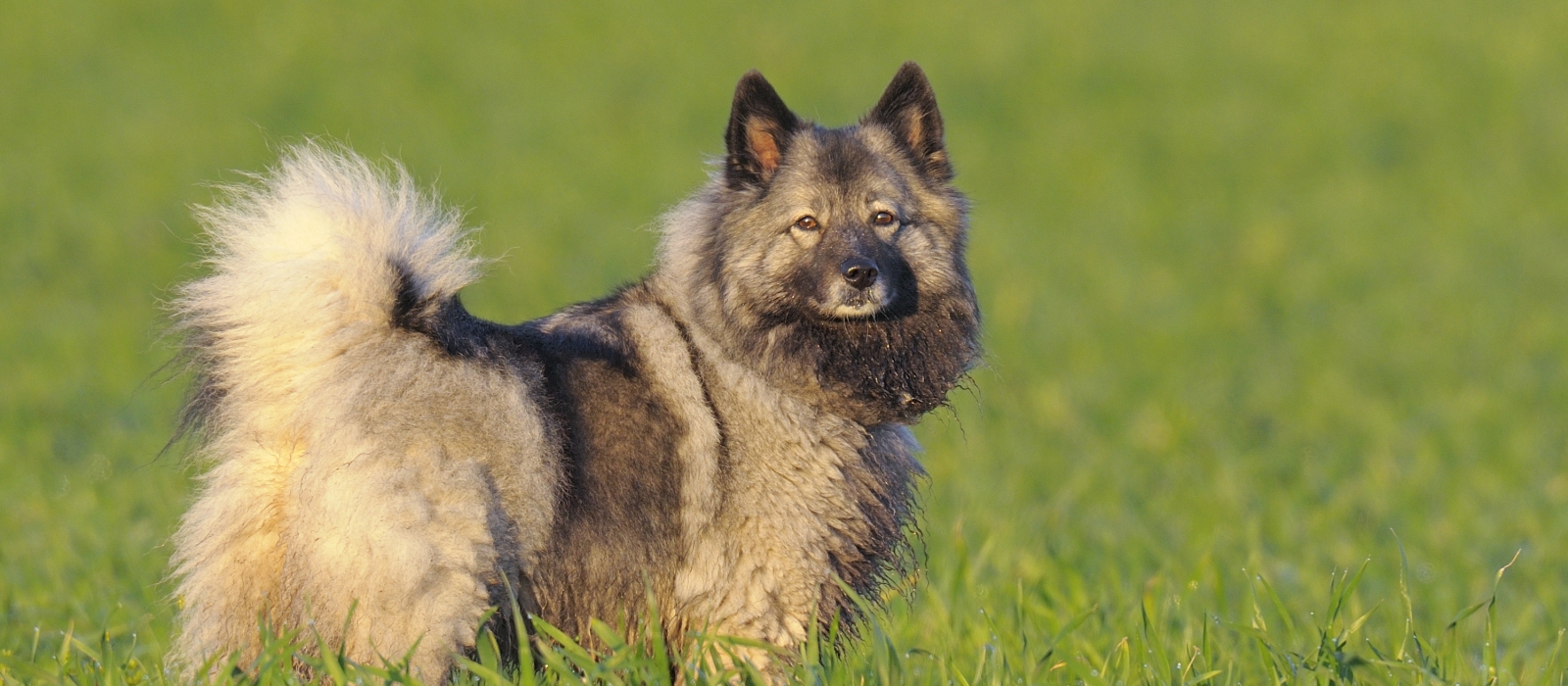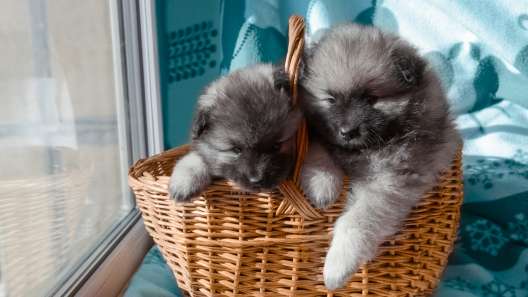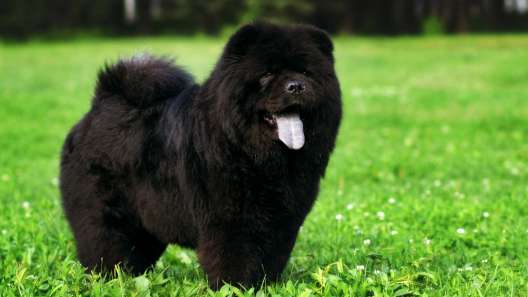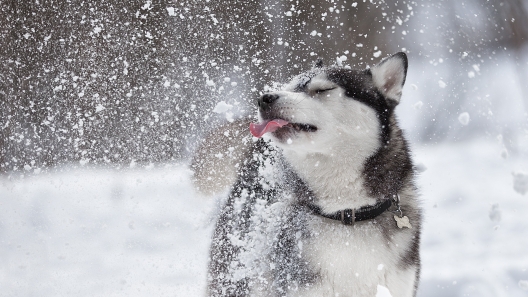-
Activity Level:
moderate
-
Shedding Level:
moderate
-
Grooming Level:
high
-
Trainability:
high
-
Good for Novice Owners:
moderate
-
Adaptability:
high
-
Kid/Pet Friendly:
often
-
Prey Drive:
moderate
-
Watchdog:
very alert
- Average Size: Medium
- Average Lifespan: 12-15 years
- Registered?: aca, akc
Keeshond Dog Breed Information
Overview
Temperament
Adaptability
Health
Owner Experience
Grooming
Activity Level
Size
Life Span
Did You Know?
The Keeshond, affectionately referred to as a Kees, is a spitz-type dog breed that originated in the Netherlands. As a spitz breed, the Keeshond is a descendant of ancient Arctic or sub-Arctic sled dogs and shares the same distant ancestors as Samoyeds and Pomeranians, among other spitz breeds.
One of the facts about the Keeshond is that this dog breed was commonly used as a barge dog that served as a companion and as a watchdog on Dutch ships. They were highly valued for their hardy nature, versatility, and nimble-footed ability to navigate movement on a sailing ship.
Although they often served in a working dog context, they were also popular companion dogs that became a symbol of the Dutch Patriots Party in the 18th Century. The rivalry in Holland between the Dutch Patriots Party and the royal House of Orange is credited with bringing the Keeshond into the worldwide limelight.
The American Kennel Club recognized the Keeshond as a member of the Non-Sporting Group in 1930. They are often found as family companion dogs, but can also be found serving as therapy, emotional support, or comfort dogs.
Although the Keeshond is known for the distinctive colors of fur that form “spectacles” on their face, they are also known for their amiable, loyal, and affectionate nature as a companion. They have a playful nature and love to be around their families. They are excellent family dogs as they love children and also tend to get along well with other dogs.
Although they are a medium-sized dog breed, they have a loud and distinctive bark that they will use to alert you to visitors. They tend to have a friendly temperament, so though they may make great watchdogs, they are more interested in making new friends and do not tend to be aggressive towards strangers. However, it’s important to start training and socialization early on and to train your dog to stop barking to ensure barking does not become excessive or problematic behavior.
The Keeshond is a highly adaptable dog breed. They do well in apartments as well as homes with larger yards. What’s most important for the Kees is that they get enough exercise and mental stimulation and that they get enough attention from their owners.
This dog breed, like the Vizsla, is considered a “velcro dog” as they are happiest when they are around their families and can become clingy. This also means that they don’t like to be left alone. Highly intelligent and active dogs, they also get bored easily. Like any dog, if left to their own devices without enough mental stimulation or exercise, they will find their own ways to entertain themselves or express excess energy, which could be destructive.
As with many dogs, the Keeshond can be sensitive to heat, but they handle most climates well. Due to their fluffy double coat, they handle the cold better than dog breeds with a thin coat of fur. They are often known as one of the dog breeds that love winter. You may even have a hard time getting them to come back inside when there is snow available to play in or lie in.
The Kees is a generally healthy dog breed. As with many dog breeds, there are certain conditions to be aware of. In the Keeshond, these potential health conditions can include hip dysplasia, elbow dysplasia, thyroid issues, patellar luxation, and eye issues. Good breeding practices and the health of the parents make a big difference in the health of Keeshond puppies.
Reputable breeders screen their dogs for these diseases to reduce the chance they are passed on to offspring. So, don’t be afraid to talk to the breeder about the genetic history of the parents and to ask to see any relevant health clearances or test results. The Keeshond Club of America, Inc. recommends an elbow evaluation, genetic testing for primary hyperparathyroidism, a hip evaluation, an ophthalmologist evaluation, and a patella evaluation.
Although the Keeshond is highly intelligent, eager to please, and highly trainable, they can sometimes be difficult for first-time dog owners to handle without puppy training or obedience classes. This is not because the Kees is difficult to train.
Instead, it’s because they are almost too easy to train. A Keeshond can easily be trained into undesirable habits or behaviors by accident. They also tend to get bored easily and will come up with their own entertainment or take their training to the next level on their own if their owners don’t keep up with them, which can result in them learning unintended behaviors.
The Kees tends to be a great fit for dog owners of all experience levels. But, because they are so highly trainable in both good habits and accidental undesirable behaviors, puppy training classes or the help of a professional dog trainer are recommended for first-time dog owners. This ensures you have the training tools and knowledge you need to keep up with your Kees in training sessions.
The Keeshond is one of the fluffiest dog breeds and has a dense double coat. This is what gives them their fluffy appearance, but it also requires some care. Keeshonden will shed moderately year-round and will go through heavier shedding sessions twice a year as the seasons change. Weekly brushing is usually sufficient to keep tangles at bay and to help control dog shedding.
During the heavier shedding sessions, it may be a good idea to increase to daily brushing or at least brushing a few times a week. Not only will this help keep your Kees more comfortable, but it will also help contain a lot of that extra fur to your dog grooming brushes! The Keeshond coat tends to keep dirt and debris at bay. They also don’t tend to get smelly, so they generally do not require frequent bathing at home to keep their coats clean. However, they do require professional grooming every 4-6 weeks.
In addition to coat care, you will need to care for your Keeshond’s ears, nails, and teeth. Although floppy ears are more prone to ear infections than ears that stick up like the Keeshond’s, you will still want to check their ears weekly to ensure they are clean, dry, and free of debris. By checking your dog’s ears regularly and carefully cleaning them as needed, you can help prevent potential ear infections and also catch anything that is happening early.
Depending on your Keeshond’s professional grooming schedule, the groomer may end up handling your dog’s nail care as once or twice monthly trimming is usually enough to keep nails from getting too long. However, you will want to check your dog’s paws and keep an ear out between grooming sessions.
If you hear your dog’s nails clicking on the floor, it’s time for a nail trim! If your dog’s nails aren’t wearing down as much naturally and/or they are on a longer grooming schedule, you may need to trim them yourself between professional grooming appointments. It’s also important to care for your dog’s teeth and gums.
Dental diseases, like gum disease and tooth decay, are one of the most common health issues in dogs, but they are also one of the more preventable ones. Good dental care for dogs, like brushing their teeth or using an enzyme toothpaste every day plus cleaning at the vet when needed, is essential to reducing and preventing the tartar buildup that leads to painful dental disease later in life.
The Keeshond has moderate exercise requirements. Their daily walks plus some playtime or time to run are plenty for this dog. They will just be happy to spend time with you being active and then cuddling up with you afterward.
If you lead a more active life, your Keeshond will also be up for more rigorous activity as they’ll just be happy to be spending time with you. The Kees is also often a good fit for some dog sports as they can be found competing in obedience or agility trials.
A fully-grown Keeshond usually stands 17-18 inches tall at the shoulder and weighs 35-45 pounds.
Keeshonden generally live for 12-15 years on average.
Unlike the standard approach in the United States to add an “s”, the plural of Keeshond is not Keeshonds – it is Keeshonden.









